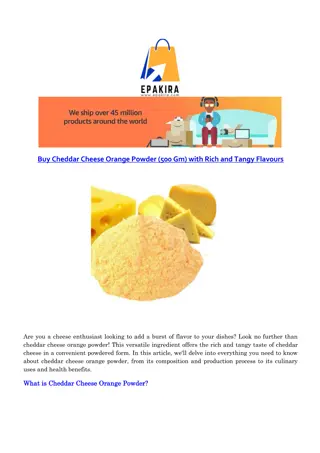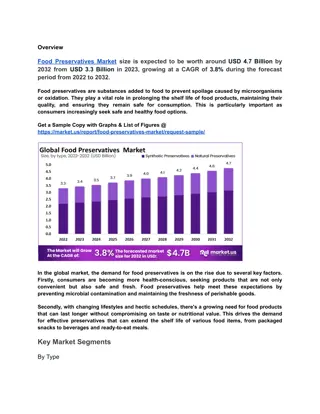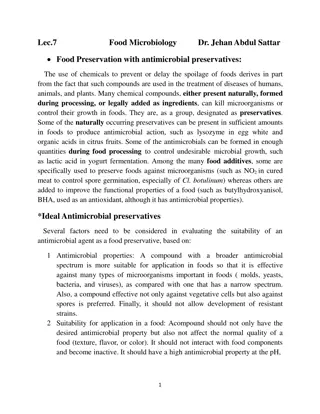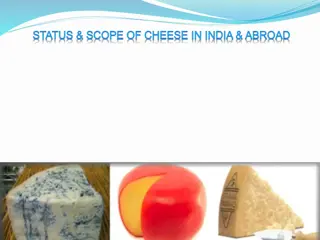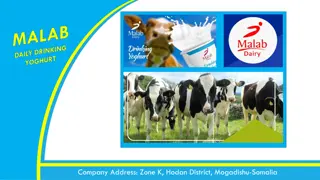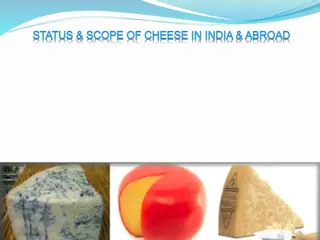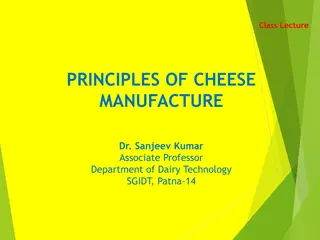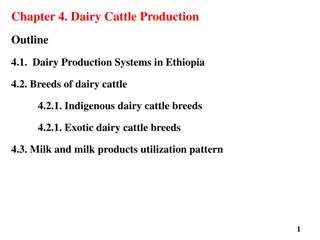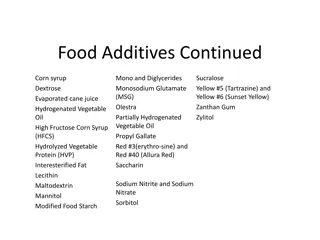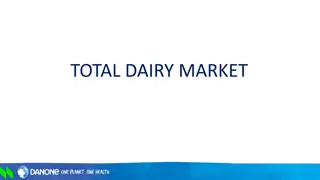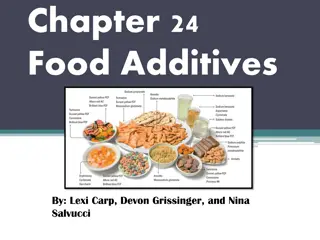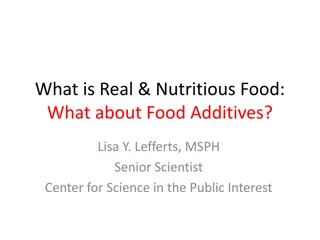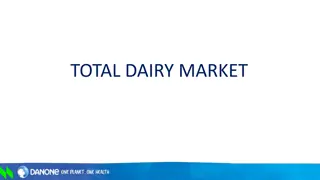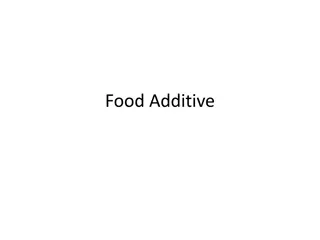Cheese Additives and Preservatives in Dairy Technology
Explore the use of various additives and preservatives in cheese production, such as salts to restore calcium balance, inhibit undesirable organisms, common salt for flavor and preservation, acidulants to increase acidity, colorants to enhance appearance, and flavorings. These additives play crucial roles in cheese manufacturing, ensuring quality, safety, and taste.
Download Presentation

Please find below an Image/Link to download the presentation.
The content on the website is provided AS IS for your information and personal use only. It may not be sold, licensed, or shared on other websites without obtaining consent from the author. Download presentation by click this link. If you encounter any issues during the download, it is possible that the publisher has removed the file from their server.
E N D
Presentation Transcript
Class Lecture CHEESE ADDITIVES AND PRESERVATIVES Dr. Sanjeev Kumar Associate Professor Department of Dairy Technology SGIDT, Patna-14
Salts to Restore the Calcium Balance in Milk Successful coagulation depends on this balance of calcium balance among the three different forms is disturbed due to heat treatment, cooling or disturbances in milk itself (colostrum, late lactation, mastitis) such cases it has become a common practice to add calcium salt, usually calcium chloride, to milk Addition of 0.02% calcium chloride is suggested
Salts Inhibitory to Undesirable Organisms Salts like potassium nitrate, sodium hydrogen carbonate, calcium carbonate, mono-sodium dihydrogen phosphate and nisin are added to arrest the growth of undesired microorganisms Commonly added in some of the less acid curd cheese like Edam, Gouda etc. Prevent the growth of gas producing organisms which cause blown defect in cheese Sorbic acid is used to inhibit the growth of yeasts, molds and some bacteria.
Use of Common Salt (NaCl) Salt normally used in cheesemaking is about 2% of the weight of the curd Salt is added to cheese: a. To suppress growth of unwanted micro-organisms b. To assist the physico-chemical changes in the curd c. To slow down the growth of the lactic acid and other types of unwanted microorganisms d. To give the cheese an appetizing taste
Acidulants most common acidulant used in cheese making is lactic acid Acids of food grade quality (e.g. lactic, glacial acetic, lemon juice, vinegar, phosphoric) are used to increase the acidity of milk. D-glucono-delta-lactone, Glacial acetic acid (12.5% concentrated acid @ 2.7% of milk) is used in Queso Blanco cheese and vinegar (0.03%) for mozzarella cheese manufacture. Lime juice is used in India to manufacture Bandal cheese, paneer and channa.
Colors and Bleaching Agents Add extra color to pale colored milk to give cheese an attractive and appetizing appearance Riboflavin is yellow in solution with a green-yellow fluorescence and tends to give curd a greenish tinge. Annato is, by far the most widely used color. Agents such as H2O2, air, -SH groups in ripening cheese and copper and iron act as catalysts in oxidation of annatto pigment.
Flavors, Spices and Herbs two groups of flavoring agents which are added to cheese: (a) those which are added for imparting flavor to the cheese (herbs and spices) (b) those flavors which are nutritive foods in their own right (ham, meats etc Chopped herbs, or their juices, or dried crust semi powders have been used to impart flavor and aroma in cheese curds
Smokes Cheeses are exposed to a smoke-charged atmosphere for smoky flavor development. Incorporation of smoke vapors containing phenolic substances has preservative effect and also impart typical flavor to cheese. Cheese is dipped in liquid condensed smoke. Addition of Beverage Alcoholic beverages, beers, wines and liquors have been added to the raw cheese curd
Cheese Bases use of a bland cheese base along with a filling of herbs, vegetables and chopped cooked meats is probably a spillover from the use of processed cheese in the similar manner typical mixtures use cheese as a base, with the addition of lettuce, chives, onions, spinach, potatoes, carrots, chopped ham etc.





